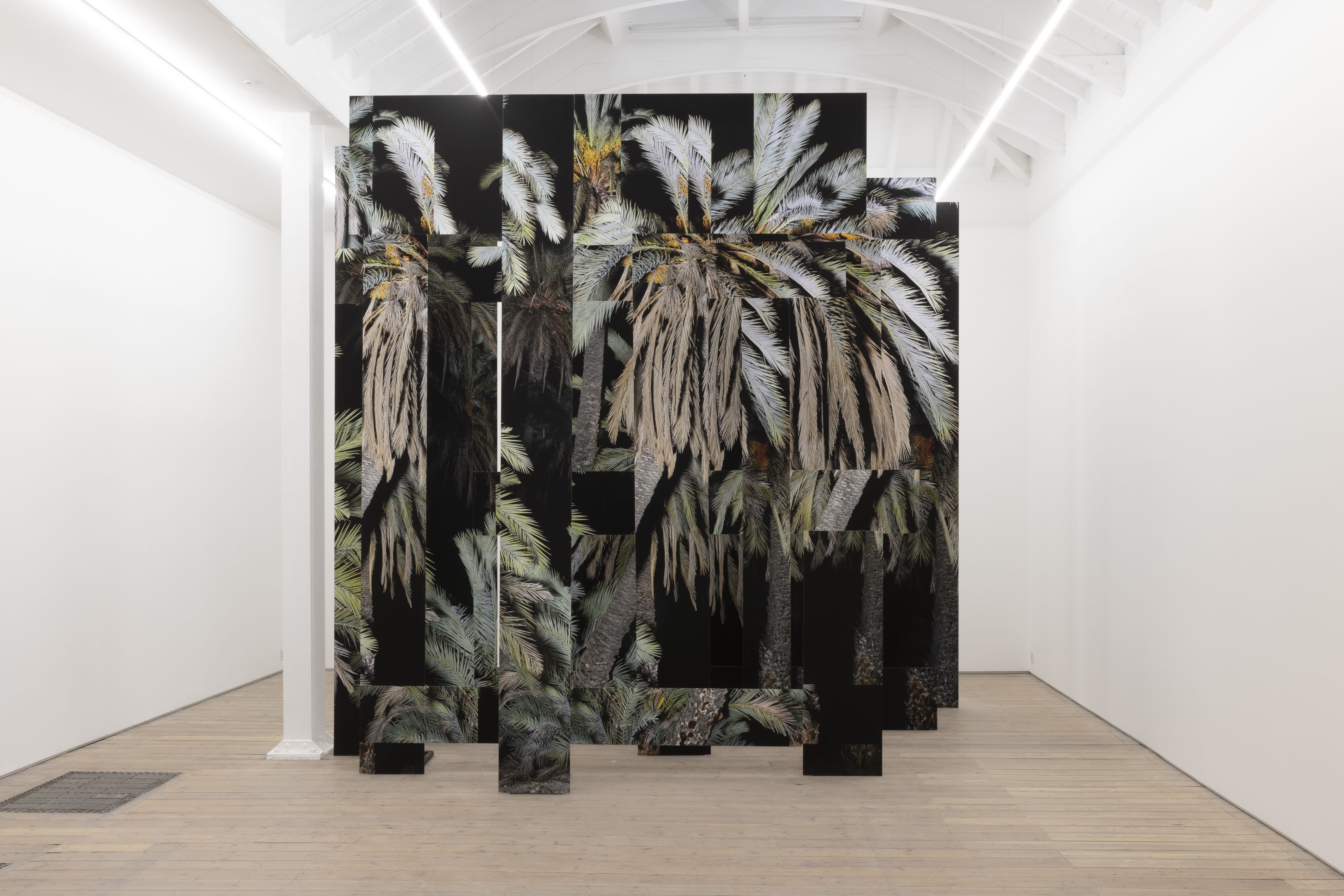21 February 2022 Founded by Jeremy Epstein and Charlie Fellowes in 2010, Edel Assanti gallery recently moved to a new premises in central London’s victorian Fitzrovia district, and have commenced their venture with an inaugural show of French artist Noémie Goudal’s series ‘Post Atlantica’.
Located in a historic Little Titchfield Street building, the newly renovated contemporary exhibition space is bright, intimate and elegant with period features. Upon arriving at the light-filled white cube, visitors are immediately struck by Goudal’s eye-catching, large-scale aluminium installation piece titled ‘Phoenix’, that takes centre stage in the main gallery as it rises into the high ceiling. It immaculately introduces us to Goudal’s conceptual and research-led body of work ‘Post Atlantica’, which positions itself at the intersection of ecology and anthropology. The working title references an ancient continent that existed 2,000 million years ago, before it divided to form parts of present-day Africa and South America.

Untitled (Giant Phoenix), 2022, Inkjet print on aluminium and steel, 345 x 390 x 353 cm,135 7/8 x 153 1/2 x 139 in.
While the Paris-based artist has been fascinated by notions of time and geography for the last decade, the latest iteration of this project is specifically centred around paleoclimatology: the study of the history of climate. Taking us on a journey that traverses contrasting landscapes – from the depths of rainforests to coastlines, swamplands and snow-capped mountains — Goudal uses a scientific and philosophical approach to apprehend the past and to depict, as well as predict, the future of the world.
Three-dimensional and anamorphic, ‘Phoenix’ is made using life-size photographic cut-outs presenting a dense tropical jungle. As the viewer moves around, the glitching matrix both assembles and splits up the image of interwoven palm trees known as Phoenix Atlantica: a rare species found in the two locations on either side of the Atlantic Ocean. The work was shot on-site and in-camera, by fabricating an actual deconstructed jungle — a technique which Goudal describes as ‘setting a scene’. Using a huge printer to produce a 1:1 copy of the trees, she sliced the image into strips that are suspended over the scene with wooden batons, each aligned to merge with the reality still partially visible beneath. She then captured the whole illusionary performance as an entity. The nature of this embedded piece, like every other one included in this show, is inherently theatrical and created entirely within the landscape. In doing so, Goudal attempts to make a parallel between the geological layers and the layers inside an image.
In addition, there is a triptych of static prints occupying the first half of the street-level gallery, layered with a projection of vigorous waves crashing into black volcanic rocks on the French coastline; a rumination about how water impacts the landscape through erosion, so slowly, that it is imperceptive to the human eye. Just like a photograph, we apprehend the world as being something that is fixed. In this multi-media artwork, Goudal cleverly combines the still and motion picture as a metaphor of how everything is in constant flux, while posing questions about our perception of the traditional, lasting image.
Downstairs in the dim-lit viewing room, a projection of her latest film called ‘Inhale, Exhale’ shows a forest rise and fall out of a lethargic swamp, soundtracked by heavy mechanical sounds and the grinding of rocks. We witness nature moving and evolving at such a pace that millennia seem to pass us by in an instant.
The exhibition furthermore comprises a series of ceramic sculptures of different types of globes (produced during the artist’s ongoing residency at Manufacture Nationale de Sèvres in France) and three silver framed photographic prints in the rear gallery space aligned to Mortimer Street under the name of ‘Plongée’. At first glance we see snowy Pyrenean scarps; only on closer inspection do they disclose Goudal’s signature staged interventions: cardboard and paper.
Perspectives shift as tableaux transform in mind-bending ways. Images are distorted, corrupted and elastic. There is no certainty in ‘Post Atlantica’, in the same way that there is no certainty about where our planet and its population will seize to exist beyond our present knowledge. Ultimately, Goudal invites us to reconsider our position on earth, and through that, to re-define our responsibilities as its temporary guardians.


